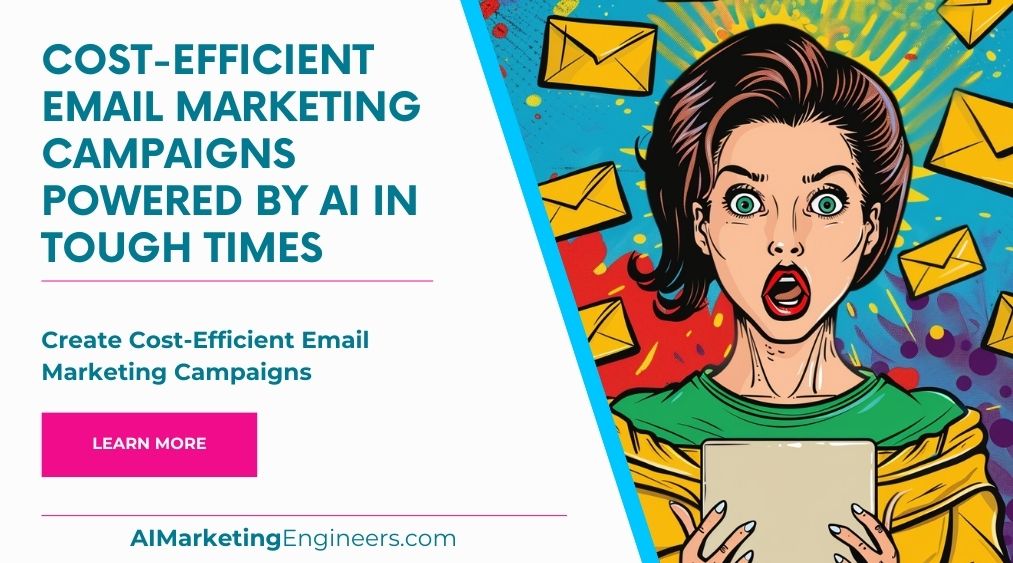Key Takeaways
✅ Understanding Customer Segmentation: Customer segmentation involves dividing your audience into groups with common traits like demographics, behavior, and lifecycle stage. This targeted approach increases engagement and conversion rates, making your marketing efforts more effective and efficient.
✅ Data Collection and Analysis: Gathering and analyzing customer data is foundational for segmentation and customized content. Utilize diverse sources – from AI tools to surveys – to gain a comprehensive understanding of your audience and shape your strategies accordingly.
✅ Personalized Content Strategies: With clear segments, tailor your content to match your customers' specific wants and interests. Implementing dynamic content that adjusts in real-time creates more personal and compelling experiences, enhancing customer satisfaction and loyalty.

Introduction
Ever wonder why certain ads feel like they're speaking directly to you, while others miss the mark? That's Customer Segmentation at work - a strategy that's reshaping the way businesses create personalized offers and deliver dynamic content. This strategy could be the turning point for your marketing efforts, unlocking a world where your messages hit home every time.
Diving into this topic, we explore not just the 'what' and 'how', but the 'why' of segmentation. By slicing your audience into distinct, manageable groups, you can craft offers and content that resonate on a personal level – potentially skyrocketing your conversion rates and return on marketing spend.
The anticipation is palpable, as we stand on the brink of unlocking actionable insights and innovative methods that will set you on a path to marketing excellence. Stay tuned; your journey towards mastering the personalized marketing landscape begins here.
Top Statistics
| Statistic | Insight |
|---|---|
| Personalization Impact: 80% of consumers are more likely to engage with a company that offers personalized experiences. | This statistic highlights the massive effect personalization has on customer engagement and why it should be a key focus for marketers. |
| Market Growth: The dynamic content delivery market size is expected to grow significantly between 2024 and 2031. | Anticipating such growth, businesses should prep to scale their capabilities in delivering real-time, tailored content. |
| Customer Strategy Alignment: Customer segmentation is an effective tool for businesses to closely align their strategy and tactics with, and better target, their current and future customers. | Understanding the customer base enables brands to craft more effective strategies and forge stronger connections with their audience. |
| Data-Driven Personalization: Collecting and analyzing customer data from various sources, such as email, advertising, and website analytics tools, helps in creating personalized content. | Leveraging data is essential in understanding customer preferences, leading to more successful marketing campaigns and higher conversion rates. |
| Audience Segmentation: Segmenting audiences based on demographics, profession, geographic location, lifecycle stage, and other factors helps in delivering targeted content. | By tailoring content to specific segments, marketers can significantly increase relevance and effectiveness, resulting in better customer experiences. |
Understanding Customer Segmentation
Have you ever wondered why some advertisements speak to you more than others? The secret lies in customer segmentation. This marketing strategy involves splitting your audience into distinct groups with common characteristics, like age or buying habits. But it's not just about grouping people together. The real magic happens when businesses use this insight to craft personalized messages. The results speak for themselves: businesses see a noticeable uptick in customer engagement and conversion rates when they tailor their communication. After all, who wouldn't prefer a message that seems to address their specific needs and wants?
Data Collection and Analysis
To get customer segmentation right, it all starts with data collection and analysis. Marketers become a bit like detectives, using tools such as website analytics and social media monitoring to understand who's interacting with their brand and how. They might send out customer surveys or even employ sophisticated AI-driven models to get the full picture. They're on the hunt for valuable insights into user preferences and habits. By building detailed personas, companies can move beyond one-size-fits-all approaches and begin to engage with individuals on a more personal level.
Segmentation Criteria
Determining the segmentation criteria is a critical step on the path to personalization. It ranges from straightforward demographics like age and gender to more nuanced insights into a customer's behavior and preferences. But it's not just about where a customer is from or what they've bought before. It's also understanding their lifestyle, values, and even where they're at in the customer lifecycle—from first-time visitor to loyal advocate. Pinpointing these aspects lets companies align their offerings with what customers are actively seeking at that stage of their journey.
Creating Personalized Offers
Personalized offers can turn a casual browser into a loyal customer. Companies no longer need to guess what might appeal to their audience; they know. Are you sending a one-day discount to a customer who's been eyeing a product for weeks? Or perhaps an informative article tailored to where they are in the decision-making process? This level of customization leads to more satisfying interactions for customers and better results for businesses. It's all about ensuring the right offer reaches the right person at the perfect time.
Dynamic Content Enterprise
It is incredible how dynamic content delivery uses advanced technologies like AI-driven CMS to adapt what users see in real-time. Imagine visiting a website and finding the homepage layout changes to match your interests—thanks to A/B testing and machine learning. These are not mere gizmos; they are powerhouse techniques bolstering marketing campaigns' effectiveness. Marketers can wield personalization tokens, for instance, to ensure no two users have the same experience, making each visit unique and directly relevant to the individual.
Measuring and Optimizing
What's crucial after setting all this up? Measuring and optimizing, of course. It's about keeping an eye on the KPIs that matter—like conversion and engagement rates—to see if these personalized interactions hit the mark. By regularly analyzing and refining their strategies based on user feedback and performance data, companies can make intelligent adjustments. It's a never-ending process of improvement, all to ensure that the users not only find what they're looking for but also enjoy the journey along the way.
AI Marketing Engineers Recommendation
Recommendation 1: Utilize Predictive Analytics to Enhance Customer Segmentation: Leverage customer data like past purchases, browsing history, and engagement rates to create predictive models that forecast future buying behaviors. According to a Salesforce State of Marketing report, high-performing marketing teams are 2.8x more likely to use predictive intelligence. By utilizing these insights, you can tailor personalized offers and content that resonate with each segment's anticipated needs, increasing conversion rates.
Recommendation 2: Integrate Real-Time Data for Dynamic Personalization: Harness the power of real-time data by incorporating technologies such as AI and machine learning. These can dynamically update personalized content as customer interactions occur. An Epsilon research found that 80% of consumers are more likely to make a purchase from a brand that provides personalized experiences. Employ tools that adapt content and offers on the spot based on current customer behavior to stay relevant and increase engagement.
Recommendation 3: Employ Omnichannel Segmentation Strategies: Studies suggest that customers value a seamless experience across channels. For instance, a report by the Aberdeen Group shows that companies with strong omnichannel engagement retain, on average, 89% of their customers compared to 33% for companies with weak omnichannel strategies. Use segmentation tools that integrate with multiple channels (e.g., email, social media, mobile apps) to create a cohesive user experience. This will ensure that personalized content and offers reach your customers wherever they are, while also providing consistent messaging and branding.
Relevant Links
- Dominate Your Local Market
- German Market Mastery
- Korean SEO Triumphs
- Online Retail Revolution in South Korea
- Chinese E-commerce Giants
Conclusion
The power of customer segmentation in the realm of marketing is undeniable, acting as a foundation for delivering personalized offers and dynamic content. By breaking down your audience into distinct groups with common traits, such as demographics, behaviors, and preferences, you pave the way for messages that resonate deeply with individuals, transforming a general audience into engaged customers.
The dedicated efforts in data collection and analysis breathe life into this strategy. Through advanced analytics and a variety of data points like social behaviors and purchase histories, businesses are able to construct detailed personas. What follows is a more precise aim in tailoring content, making campaigns more effective and personal. When it comes to creating customized experiences, utilizing AI to adapt content delivery adds an adaptive edge. The methods of applying dynamic content and real-time personalization can elevate a brand’s interaction with its customers to new heights, enhancing customer satisfaction and loyalty.
Tracking key performance indicators is not just about numbers; it's about understanding the story they tell and using them to refine and improve strategies. Regular performance analysis can reveal the strengths and weaknesses of segmented campaigns, providing crucial insights for optimization. In our dynamic digital landscape, one can't ignore the competitive advantage gained through customer segmentation and personalized content delivery. Companies that leverage these insights are not only staying ahead of the curve but are also ensuring a future where each customer feels heard, understood, and valued. Now, isn't it time you looked at your customers as distinct individuals and not just as a faceless mass?
FAQs
Question 1: What is customer segmentation?
Answer: Customer segmentation is the process of dividing a target audience into distinct groups based on shared characteristics, behaviors, or preferences. This allows businesses to tailor their content and offers to meet the specific needs and interests of each segment.
Question 2: Why is customer segmentation important?
Answer: Customer segmentation is crucial for delivering personalized experiences, enhancing engagement, and increasing conversion rates. It helps businesses understand their audience better, create targeted messaging, and allocate resources more effectively.
Question 3: What are the main types of customer segmentation?
Answer: The main types of customer segmentation include demographic, behavioral, and preference-based segmentation. Demographic segmentation focuses on age, gender, location, and other demographic factors. Behavioral segmentation looks at user behavior, such as purchase history and browsing patterns. Preference-based segmentation considers individual preferences and interests.
Question 4: How do AI and machine learning enhance customer segmentation?
Answer: AI and machine learning algorithms can analyze large volumes of data to identify patterns and trends, enabling more accurate and detailed customer segmentation. They can also predict user behavior and preferences, allowing for more effective personalization.
Question 5: What is the role of data analytics in customer segmentation?
Answer: Data analytics plays a critical role in customer segmentation by providing insights into user behavior, preferences, and demographics. It helps businesses identify key characteristics and patterns that define each segment.
Question 6: How can customer segmentation be integrated with omnichannel marketing?
Answer: Customer segmentation can be integrated with omnichannel marketing by tailoring content and offers across different channels (e.g., email, social media, websites) based on the specific needs and preferences of each segment.
Question 7: What are some common tools used for customer segmentation?
Answer: Common tools used for customer segmentation include customer relationship management (CRM) systems, marketing automation platforms, and data analytics software like Tableau.
Question 8: How can businesses ensure consistency across channels?
Answer: Businesses can ensure consistency across channels by maintaining a unified brand message and using dynamic content that adapts to each user's preferences and behaviors.
Question 9: What are some best practices for creating effective customer segments?
Answer: Best practices for creating effective customer segments include using a combination of demographic, behavioral, and preference-based data, regularly updating and refining segments, and ensuring that segments are actionable and measurable.
Question 10: How can businesses measure the effectiveness of customer segmentation?
Answer: Businesses can measure the effectiveness of customer segmentation by tracking metrics such as engagement rates, conversion rates, and customer satisfaction. They can also use A/B testing and machine learning algorithms to continually refine and optimize their segmentation strategies.
Academic References
- Kushwaha, T., & Shankar, V. (2013). A review on customer segmentation and targeting using data mining techniques. In Proceedings of the International MultiConference of Engineers and Computer Scientists (Vol. 1). This study meticulously reviews various customer segmentation processes and targeting methods applicable in e-commerce, shedding light on the utilization of data mining techniques to enhance the personalization of customer outreach.
- Anand, P. B., & Kahn, J. (2000). Dynamic profiling of consumers for customized offerings over the Internet: a model and analysis. Journal of Interactive Marketing, 14(2), 55-70. Through an analytic lens, this research delves deep into the aspects of dynamic consumer profiling and its significance for tailor-made product offerings online. It eloquently emphasizes how gathering information and understanding consumer search behaviours are pivotal for effective profile building.












